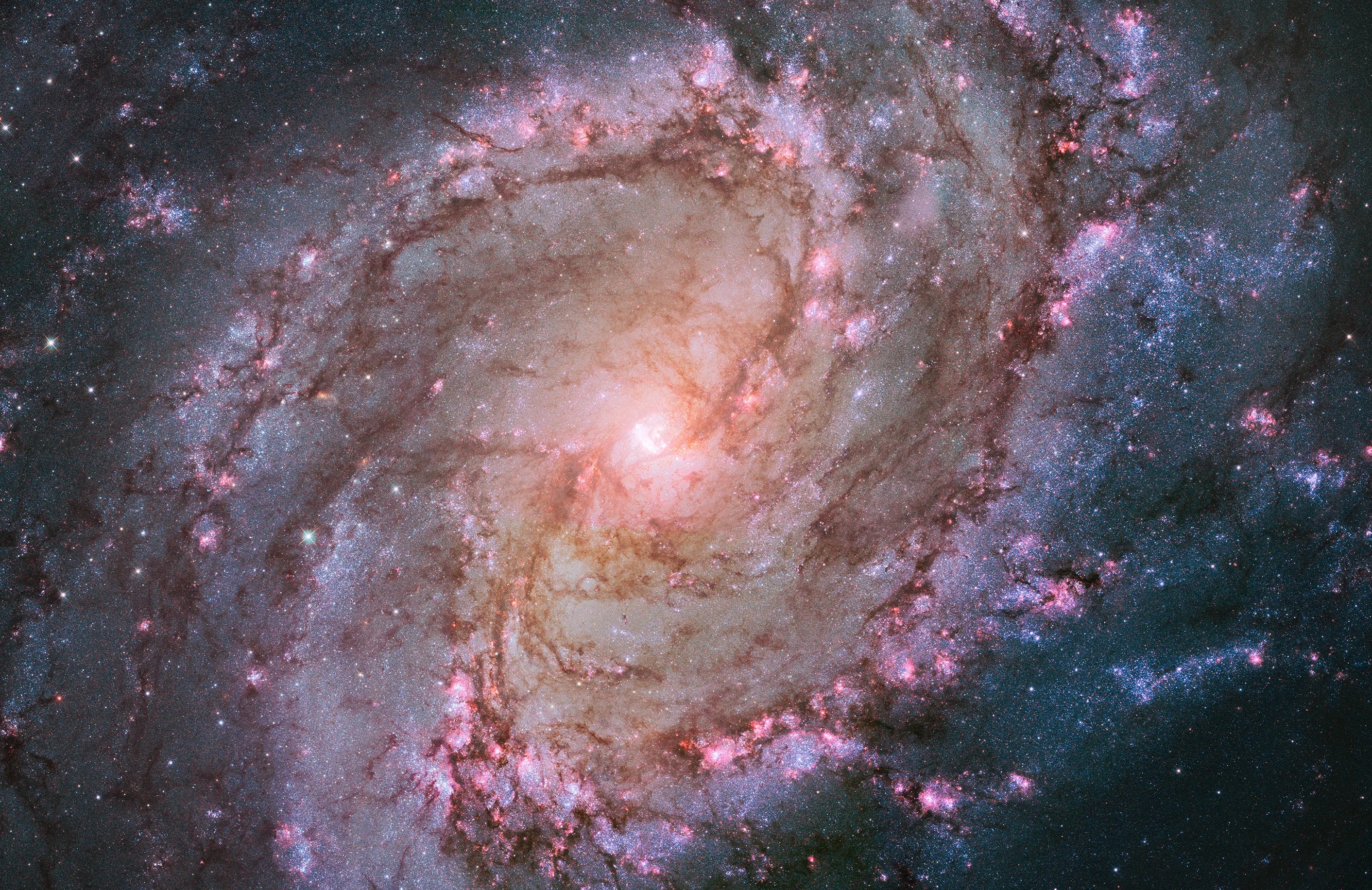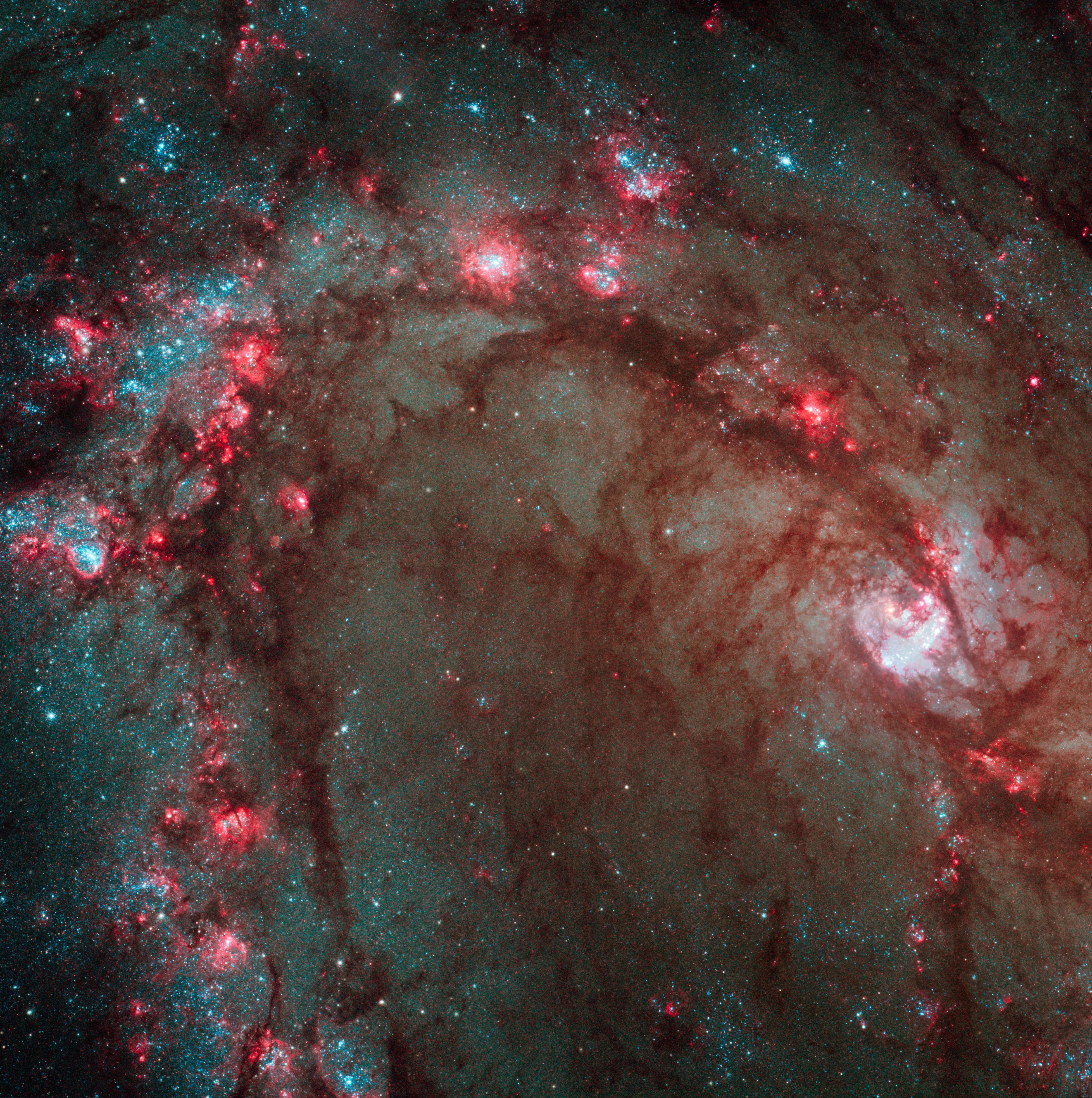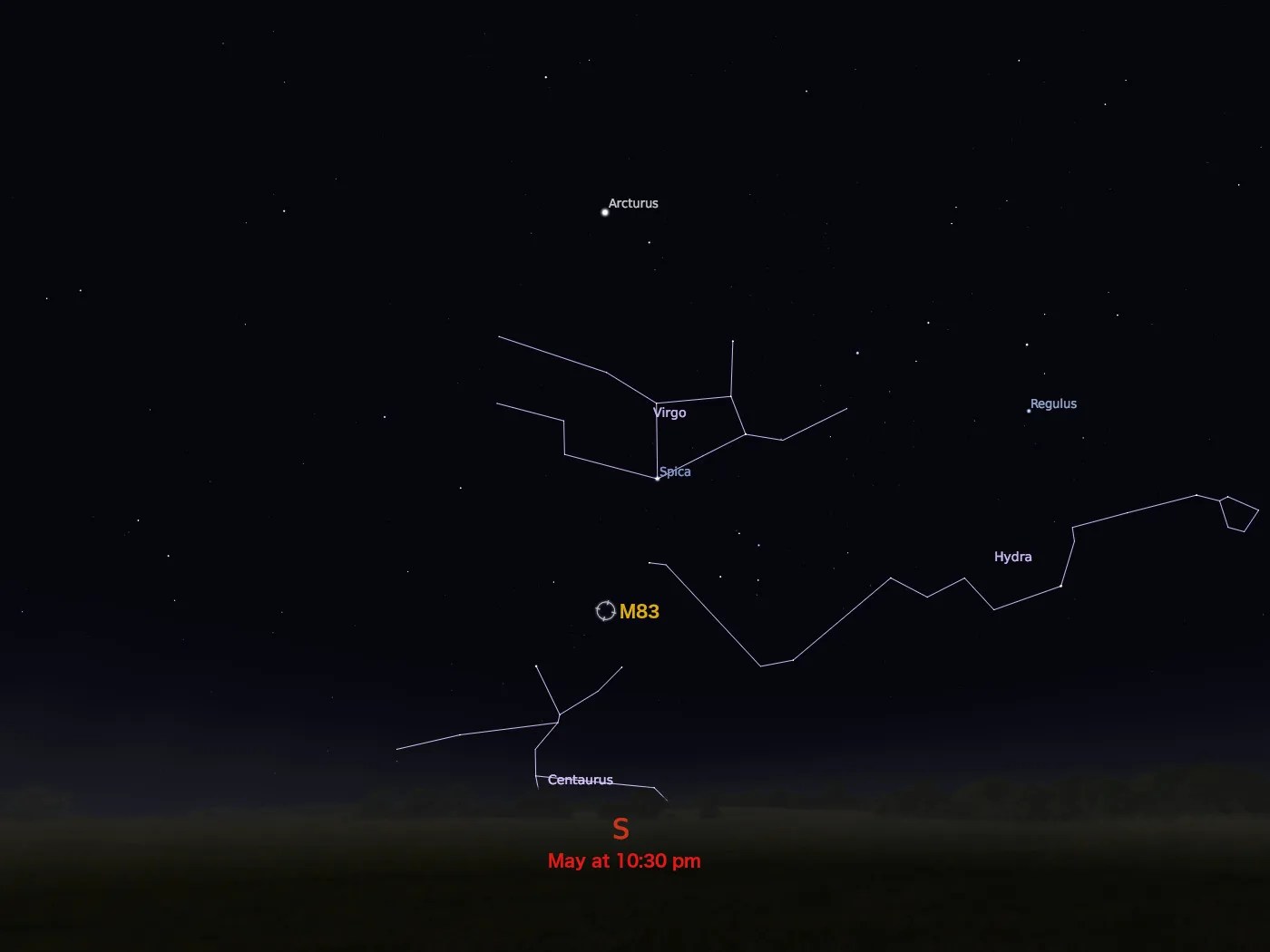Messier 83
This spiral galaxy is forming new stars in clusters on the edges of its dark, spiraling dust lanes.
Distance
15 million light-years
Apparent Magnitude
7.5
constellation
Hydra
object type
Spiral Galaxy

This beautiful Hubble image captures hundreds of thousands of individual stars, thousands of star clusters and hundreds of supernova remnants in the spiral galaxy M83. Also known as the Southern Pinwheel, this galaxy is located 15 million light-years away from Earth in the constellation Hydra. It was discovered in 1752 by the French astronomer Nicolas Louis de Lacaille. With an apparent magnitude of 7.5, M83 is one of the brightest spiral galaxies in the night sky. It can be observed using a pair of binoculars most easily in May.

Hubble’s image reveals interstellar “bubbles” produced by nearly 300 supernovas. By studying these supernova remnants, astronomers can better understand the nature of the stars that exploded and dispersed their nuclear processed chemical elements back into the galaxy, contributing to the next generation of new stars.
The newest generations of stars in M83 are forming largely in clusters on the edges of the dark, spiraling dust lanes. These brilliant, young stellar groupings are only a few million years old and produce huge amounts of ultraviolet light. That light is absorbed by the surrounding diffuse gas clouds, causing them to glow in pinkish hydrogen light.
For more information about Hubble’s observations of M83, see:

Explore Hubble's Messier Catalog
The following pages contain some of Hubble’s best images of Messier objects.

Messier 1 (The Crab Nebula)
Better known as the Crab Nebula, Charles Messier originally mistook Messier 1 for Halley’s Comet, which inspired him to create…

Messier 2
Hubble's image of Messier 2 is comprised of visible and infrared wavelengths of light.

Messier 3
Messier 3 holds more than 500,000 stars.




